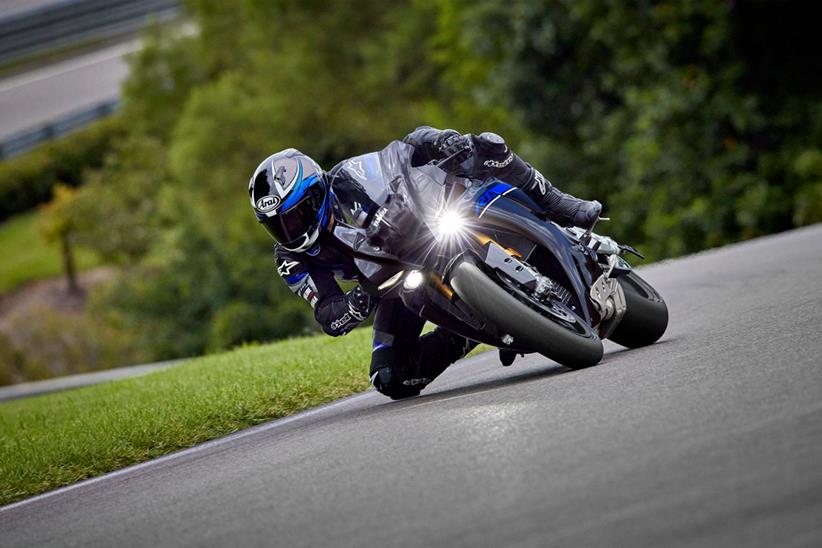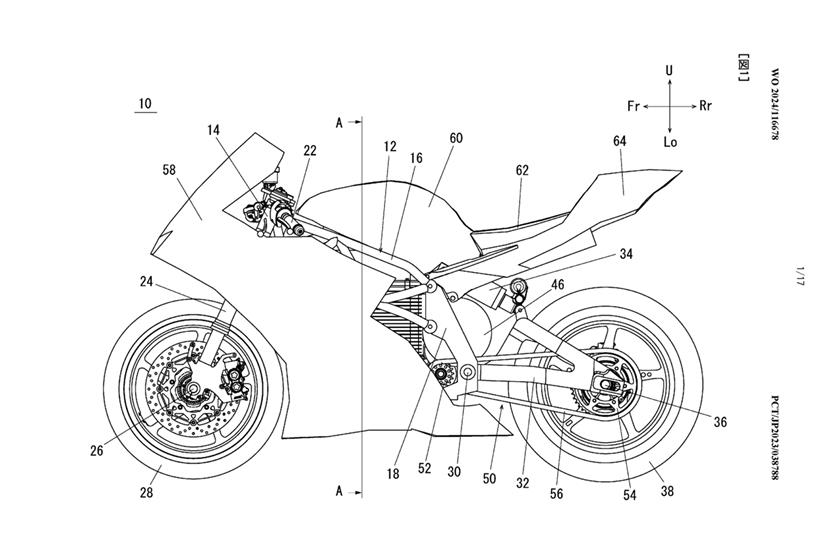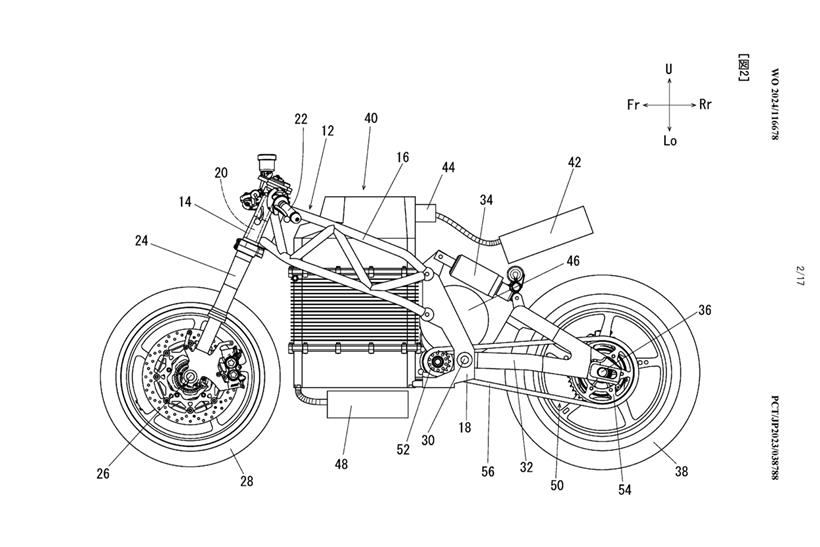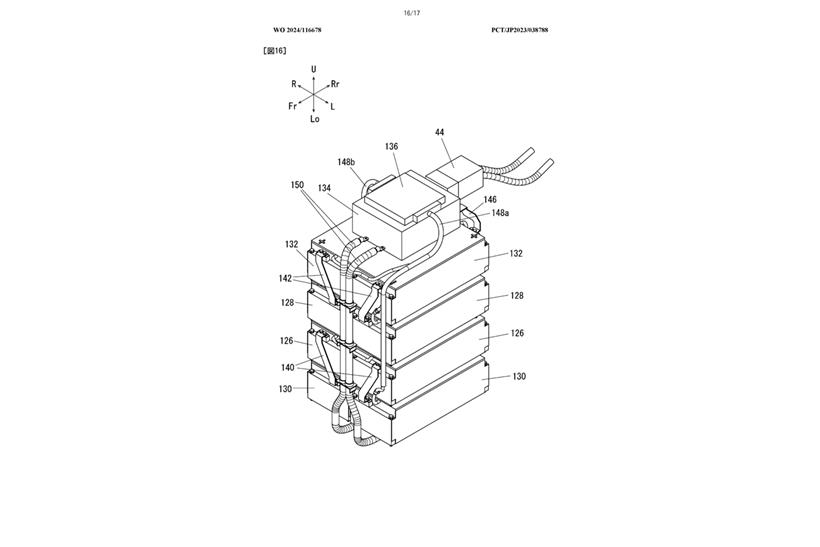Yamaha’s prototype electric superbike | New patent reveals air-cooled battery pack and sporty motor

Over the decades we’ve come to accept that really high-performance combustion engines need to be liquid cooled to allow the tight tolerances and controlled combustion needed to meet modern demands in terms of power and emissions.
But it hasn’t always been so clear-cut and the air-cooled engine’s staunch supporters have included such engineering legends as Ferdinand Porsche and Soichiro Honda. Before emissions limits boxed them into the liquid-cooled route, both had huge success with high-performance air-cooled designs that offered big power without the weight and complexity of water-cooling and all the pumps, pipes and radiators that it brings.
Today there’s a similar split when it comes to electric vehicles, with manufacturers torn between the fine temperature control of liquid cooling and the reduced weight and greater simplicity of air-cooling. Ducati’s MotoE bikes, for example, use two separate liquid-cooling systems – one for the motor and one for the battery – to keep each at its optimum temperature.

Meanwhile manufacturers of other high-powered electric machines including Energica and Verge prefer the weight saving of air-cooled designs.
A new patent application from Yamaha show’s they’re also leaning towards the idea of air-cooling, revealing designs for a future electric superbike with a vast battery pack and large motor, pointing towards a very high level of performance.
The patent specifically relates to the air-cooled battery case, with the aim of making it as simple and efficient as possible to maximise the system’s cooling performance and minimise the number of components and the number of seals needed for liquid cooling.

The main, central section is heavily finned to dissipate heat and has a horizontal internal platform cast into it, also finned, splitting it into two layers.
Above and below the central part, tub-like castings are bolted on to create a sealed unit, with two more finned horizontal platforms sandwiched between them and the centre section, and the underside of the bottom section is also covered in fins. That creates four finned platforms for batteries to sit on, and with two battery modules on each platform there’s a total of eight. The result is a large surface area to shed heat without the need to add water channels, pipes, radiators and an electric water pump with all its associated control electronics. In addition, the cooling fins themselves add rigidity to the battery casing while minimising its overall weight.
The neat package puts the battery management electronics inside the top of the case, where you’d normally find the fuel tank on a petrol bike, and positions the inverter – which changes the DC output of the battery into AC power to feed the motor – is underneath in the bike’s belly.

A charger is mounted under the seat and although the patent simply describes the batteries as lithium-ion, upcoming tech advances such as solid-state lithium-ion batteries will swing the balance towards air-cooling as they tolerate a much broader range of operating temperatures than current designs.
Yamaha already have their own EV motor manufacturing arm, developing and selling drive units to other companies, and have shown motors ranging from 35kW (47bhp) to 350kW (470bhp), so getting superbike levels of performance should be no problem.







